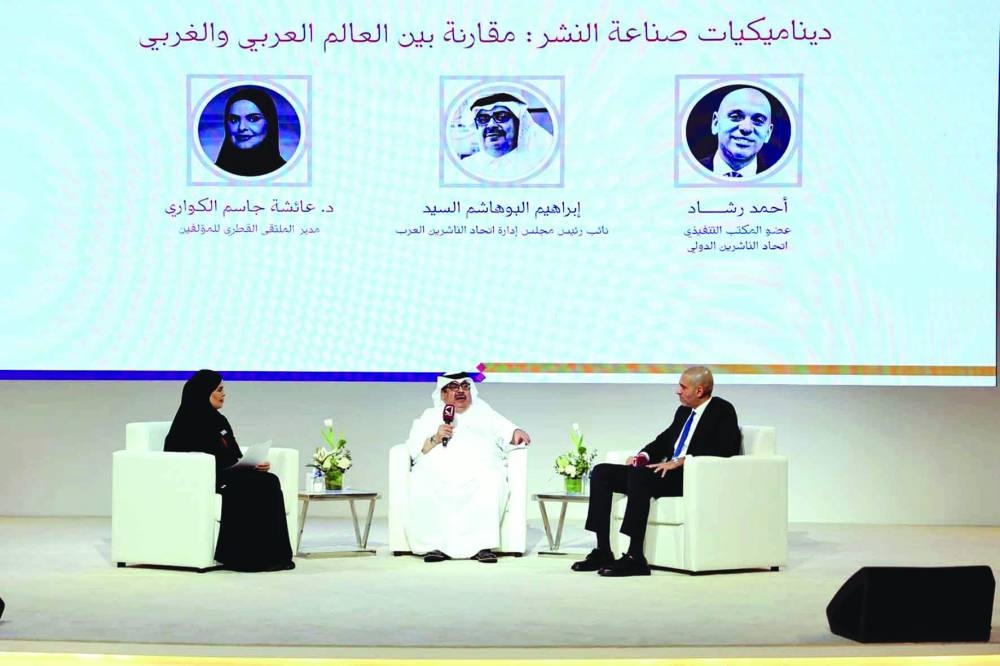As part of the 34th edition of the Doha International Book Fair (DIBF), a seminar titled 'Dynamics of the Publishing Industry: A Comparison between the Arab and Western Worlds' was held.
The seminar hosted Ahmed Rashad, Executive Board Member of the International Publishers Association (IPA), and Ibrahim al-Bu Hashem al-Sayed, Vice Chairman of the Arab Publishers Association (APA). The seminar was moderated by Dr Aisha Jassim al-Kuwari, Director of the Qatari Authors Forum.
The seminar addressed the reality of the publishing industry in both the Arab and Western contexts, in terms of development, challenges, and practices. Ibrahim al-Bu Hashem began by referring to the beginnings of the publishing and printing industries in the Arab world, comparing them to the early developments witnessed in this field in the Western world.
He provided a historical interpretation of the path of publishing between the two cultures, noting that the challenges facing publishing vary from one region to another.
He explained that Arab publishers, unlike their Western counterparts, often bear all the responsibilities related to publishing, distribution, and promotion. This places heavy burdens on them, making them vulnerable to criticism from some authors, despite their efforts under adverse circumstances.
He believed that the future of publishing in the Arab world is promising if it has supportive entities and unions capable of pushing the industry forward. Ahmed Rashad pointed out that the DIBF is witnessing remarkable development and is gradually moving away from the traditional model of book fairs, offering a more integrated and diverse experience.
He emphasized that Western markets such as the American, French, English, and Italian markets have made great strides in developing the publishing industry.
While other markets suffer from structural difficulties, including the absence of literary agents. This makes the relationship between authors and publishers in the Arab world based on individual endeavours that lack professional organization. This is also clearly evident in the challenges facing translation processes, which in turn remain limited and unsystematic.

The seminar panel (from left) Dr Aisha Jassim al-Kuwari, Ibrahim al-Bu Hashem al-Sayed, Ahmed Rashad.
